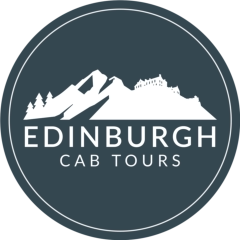It seems we can’t find what you’re looking for. Perhaps searching can help.
It seems we can’t find what you’re looking for. Perhaps searching can help.
We booked with Edinburgh Cab Tours for two trips during our trip to Scotland. We are normally adventure seekers and drive ourselves but our most recent trip would include our parents with seven people in all, so we sought out a company that could handle that size group and customize our service. Our first trip was an airport pickup with stops at Stirling Castle and the William Wallace Monument on the way to St. Andrews. We also used them for a standard in-city pickup to EDI. Both driver-guides, Stephen and Allan were absolute professionals. They were friendly, punctual (actually early) and attentive to all of our needs, including taking the initiative to adjust our pickup time when our flight was arrived an hour early. I highly recommend this company and will use them again.
We arranged for a transfer with Edinburgh Cab Tours from Pitlochry to Edinburgh with sites along the way. It was outstanding! We thought our guide, Stephen, was incredibly professional, engaging and fun. While we had only asked for a driver (and an excellent one he was), he still took the time to educate us along the way and was extremely flexible with how we arranged our day. We were so pleased to have him and would recommend him & the Edinburgh Cab Tours to anyone!! Thank you for making it a fantastic experience for us NYC girls!!
Our recent city tour of Edinburgh with Edinburgh Cab Tours was exceptional. It far-exceeded our expectations. We are a family of three and scheduled a private tour for the morning after our arrival. The cost was very reasonable. We were greeted at our hotel on-time by our guide driving a new Mercedes passenger van. The tour proved to be an excellent start to our 4-day stay in Edinburgh. The historical and cultural information we gleaned from the tour was key to our first impressions of the city and formed the basis of our personal sightseeing adventures that followed over the remainder of our visit.
We were 6 people with varying interests. Andy spent months emailing me options and working with us to create the perfect trip. We ended up with 6 days trips since everything he suggested sounded wonderful. Our driver-guide picked us up every morning from our air bnb and dropped us at night. He had an itinerary but was always flexible when we asked for a detour or a request to stay longer in an area to relax or have a nice lunch or shop. He arranged for all lunches at wonderful non touristy places. His personality was lovely. I can’t say enough about how much we enjoyed spending time with him. Friendly and knowledgeable are 2 adjectives to describe him. I would recommend him with 10 stars if that was an option. Thank you Edinburgh Cab Tours for a very memorable and wonderful trip.
